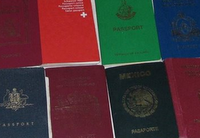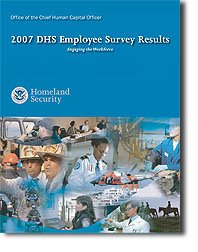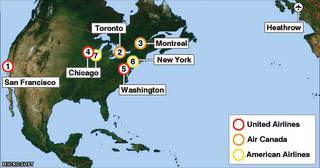Exit Strategy

Among its many recommendations to improve the security of our nation, the 9/11 Commission also recommended the Department “complete, as quickly as possible, a biometric entry-exit screening system” to record the entry and exit of visitors at our ports of entry, identify potentially dangerous people, and process lawful travelers more efficiently. In the Commission’s words, our ports of entry are “a chance to establish that people are who they say they are and are seeking access for their stated purpose, to intercept identifiable suspects, and to take effective action.”
Congress also mandated an entry-exit system, though it may surprise you to learn they did so more than a decade ago – in 1996. Initial efforts to get this system up and running encountered strong resistance from border communities, which effectively killed the plan. As a result, years later our immigration authorities lacked a valuable tool that might have prevented some of the 9/11 hijackers from entering our country.
The good news is the entry portion of this system, known as US-VISIT, is now deployed at all U.S. ports of entry. Every day, US-VISIT checks thousands of visitors’ fingerprints against integrated criminal, terrorist, and immigration watch lists and databases in real time, and it has kept thousands of criminals from entering our country.
Combined with our use of advance passenger data as well as recent reforms to the Visa Waiver Program that will require travelers under the program to submit information electronically prior to arrival in the United States, we have created a formidable barrier against the entry of terrorists, criminals, and immigration violators while expediting safe and efficient travel for everyone else.
Today we are taking another major step forward to develop the capabilities of our border management system. We are announcing a proposed rule that mandates the collection of digital fingerprints from most non-U.S. citizens departing the United States by air or sea – a key underpinning of the recent legislation authorizing an expanded Visa Waiver Program.
Why is having an exit system important? It will allow us to positively confirm through biometrics that an individual has, indeed, left our country. By knowing who departed on time and who overstayed the terms of their admission, we can better manage our borders and build more integrity into our immigration system.
Of course, we need to overcome some technical challenges before we can fully deploy an exit system, including building the necessary infrastructure to capture and transmit the fingerprint data as people leave our country while minimizing the impact to travelers.
That is why our rule proposes to build upon the role commercial air carriers and vessel owners and operators already play. Today, carriers collect and transmit biographic information electronically and submit paper I-94 forms to our Department for passengers departing the United States. The introduction of biometrics into that process will require commercial air carriers and vessel owners and operators to collect additional information and make sure it is protected under rigorous privacy standards.
For this reason, we are seeking comments over the next 60 days from industry partners as well as the general public as we plan to integrate new exit procedures into the international departure process. We are looking for creative ideas and real world solutions. The proposed rule is available on our website and it will be published in the Federal Register later this week and open for comments.
Eventually, our goal will be to require international visitors departing from any airport or seaport with international departures to provide biometric data before leaving the country. We will address land border exit procedures in a future rulemaking. We welcome your input as we address this critical 9/11 Commission recommendation and add yet another important layer of security to our nation.
Michael Chertoff
Labels: immigration enforcement, travel security, US-VISIT








